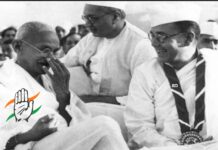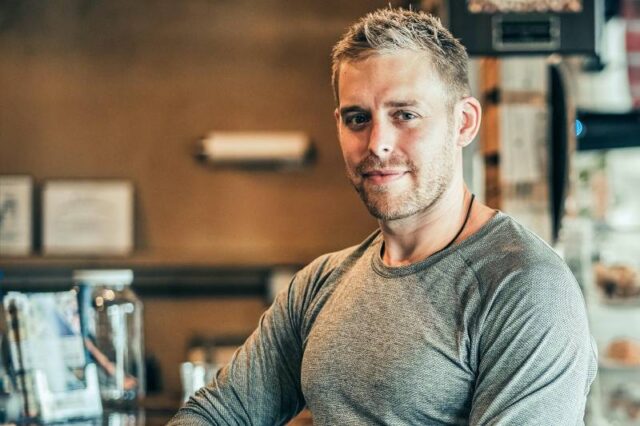One of the things Dylan Ogline teaches in his training program, Agency 2.0, is that you should never build a product until you know someone wants to buy what you are selling.
In the case of Agency 2.0, Dylan knew the demand existed because friends and acquaintances kept asking him to teach them how to do what he did—build a seven figure agency that he runs from his laptop.
“Most of them don’t have flexibility in their life,” Dylan said. “For me, [digital entrepreneurship] is about freedom—freedom to do what I want, when I want, work on what I want, when I want. If something cool comes up tomorrow, I don’t have to work at all. I’m going to do this cool thing. They don’t have that ability.”
It’s hard to blame them for wanting what Dylan has. Based in Orlando, Dylan works from home, unless he’s on an adventure—hiking mountain trails in Colorado, or discovering exquisite street food down the back alleys of Bangkok. Impossibly fit at 31, he has plenty of quality time to spend bonding with his girlfriend or walking their two dogs. It’s a pretty good-looking life.
“He Works For a Living!”
Of the people not clamoring to learn to replicate his success is his own family. Chalk it up to “These kids with the hair and the SnapChat,” but his own family just doesn’t get it.
To the Old Guard, running a business meant opening up an office, micromanaging employees, and working backbreaking hours to clear a little more revenue than last year, even if it kills you as it almost did for Dylan’s father, survivor of three heart attacks.
But Ogline Digital, his million-dollar brainchild? That’s not a real business. “My dad sometimes asks me, ‘What is it you do?’ I tell him ‘Basically, marketing.’ And my dad would say ‘Marketing is just taking money and throwing it out the window!”
Tell that to the clients of Ogline Digital. They pay him tens of thousands a month. Some of them he has on autopilot, with as little as one or two hours a day, one or two hours a week, to keep the marketing train on the tracks.
The clients don’t mind one bit—if they’re getting an extra $1 million in sales, because Dylan is the best in his micro-niche. He runs his operation like a Swiss watch, with automated systems and only a few remote employees who know their jobs so well that Dylan rarely hears from them.
Dylan’s whole approach is, tangentially, a rebuke to the Old Guard way of thinking about running a business—an attitude his Gen X older brother has. Dylan’s brother runs a car dealership and doesn’t think any more of his baby brother’s digital nomad lifestyle than dad does.
“I was hanging out by my brother’s pool one time with him and a few of his friends,” Dylan recalls, “and we were talking about pools. Three of us have them and end up talking about how to properly clean your pool. Ya know, manly stuff. And I felt like my brother was taking his friend’s opinion more seriously. So I tried to insist, like, ‘Hey, I know what I’m talking about here!’”
“My brother pointed at his friend and said ‘Yes, but he’s a working man!’”
Rich Brother, Poor Brother
What’s a seven figure digital nomad to do? Incidentally, Dylan worries that his used car dealer brother is prediabetic and headed to his own heart attack.
It makes him sad for many reasons, not the least being Dylan credits his entrepreneurial bug to his brother, who left a copy of Rich Dad, Poor Dad by Robert Kiyosaki. Fourteen-year-old Dylan devoured Kiyosaki’s grade-school-level breakdown of basic finance and wealth principles, and took to heart one of Kiyosaki’s core recommendations—that the key to sustainable wealth was starting a business.
Not just being self-employed, that’s just a job that you own. No, a capital-B Business, an asset that you build, one that practically runs itself when up-and-running.
Growing up in rural Pennsylvania, freezing through winters when his frugal parents refused to rack up even a modest heating bill, Dylan sought to put Kiyosaki’s advice into practice right away. In the pre-smartphone era, he imported sophisticated European cell phones from a supplier who had no idea they were wholesaling to a teenager. Dylan sold the phones on eBay until his payment processor discovered his age and shut down his account.
Five Clients, Six Figures
First came Kiyosaki, then Tim Ferriss. Having dropped out of high school when he realized he was an “unemployable entrepreneur,” Dylan eventually came across The Four-Hour Workweek, Ferriss’ blockbuster of digital entrepreneurship.
Dylan found himself captivated by Ferriss—online businesses, the 80/20 principle, and “mini-retirements.” The Tim Ferriss “mini-retirement” is a voyage of a month or more, a chance to travel, rejuvenate, and explore the world now, not in some far-off retirement where you’re too old and frail to enjoy it. This is the type of traveling that Dylan peruses now. Taking on a more Vagabonding wondering style compared to the short one week trips most take to a resort.
Dylan’s pitch for Agency 2.0 promises to teach “the processes and tools I used to build a seven figure digital agency.” But Dylan finds that many of the students who come to him, disillusioned with the rat race and in search of a more fulfilling and prosperous life, don’t aspire to seven figures—six figures would be plenty.
Like both Ferriss and Kiyosaki, and unlike the elder Oglines, Dylan’s students aren’t in a race to the biggest bank account. Like both Ferriss and Kiyosaki, they value wealth not so much in money, but in time—time with loved ones, time to cultivate hobbies and learn new things, time to express themselves, time to exercise and eat right, time to see the world, time added to the length of their lives.
Six figures might not buy you a Lamborghini, but it can buy you a lot of time. It makes sense when you think about it—time is the one asset you can never get back. If you lose money, you can always make it back. But time spent in a cubicle, in a hospital, exhausted in front of the tube or bemoaning past failures – you never get that time back.
Dylan loves to see his students’ agencies take off—once they hit six figures and learn how to scale, seven figures is almost inevitable. But moving the goalposts to six figures makes Dylan’s job as a teacher a lot easier.
“If you have five clients, you can have a six figure agency, easy,” Dylan concludes. “I have a seven figure agency off of less than ten clients. Sometimes less than five as a few of them come and go seasonally. So less than six a times.”
To take a look at Dylan’s training program for yourself, visit his website.
(Syndicated press content)
Read more:


































